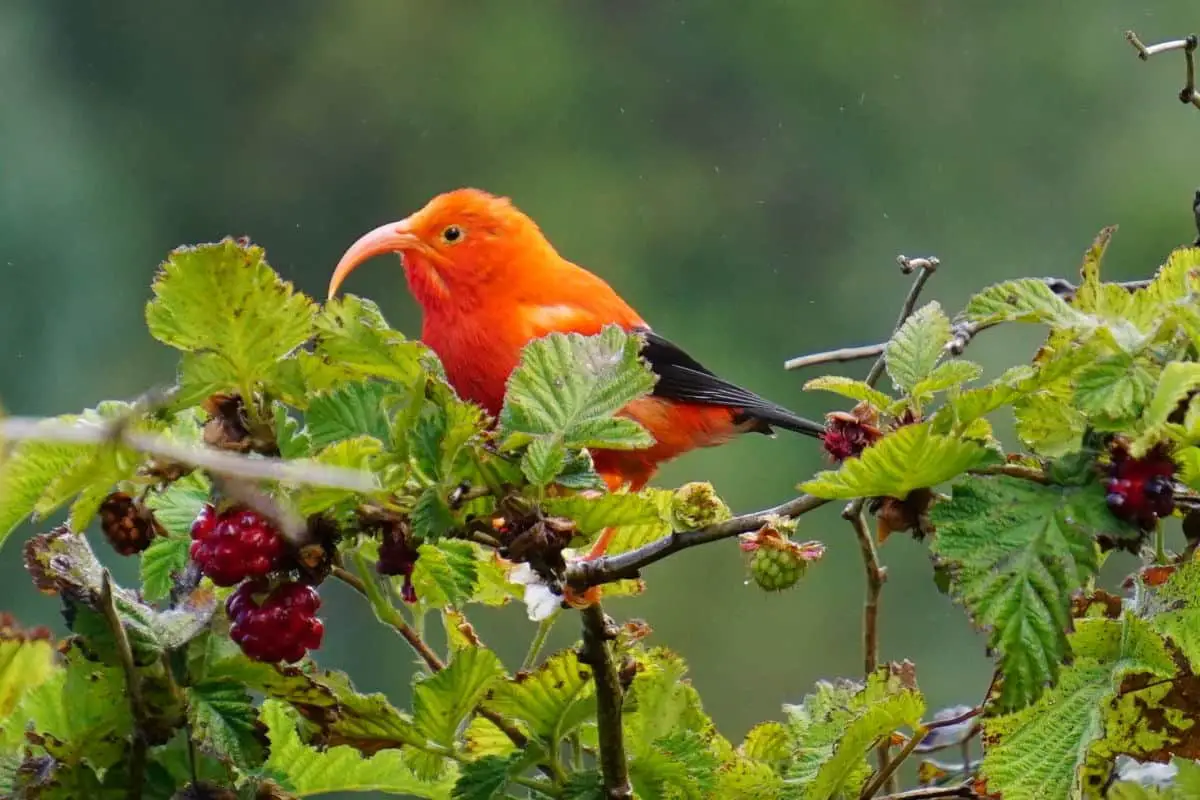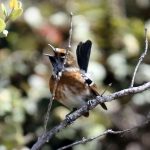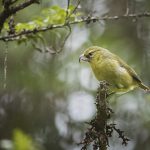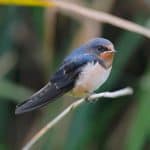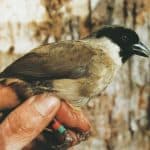Common Name: ʻIʻiwi
Scientific Name: (Drepanis coccinea)| Size | Diet | Range in Hawaii | Status in Hawaii |
|---|---|---|---|
| 6 in. - 7 in. | nectar | Kaua'i, O'ahu, Maui, and Hawai'i (the Big Island) | Vulnerable |
The ʻIʻiwi (Drepanis coccinea), also known as the Scarlet Honeycreeper, is a small bird species that is native to the Hawaiian Islands. Endemic to Hawaii, the ʻIʻiwi is a beloved sight among birdwatchers and a symbol of the islands’ unique biodiversity. However, the species is now considered vulnerable due to habitat loss, disease, and other threats.
In this article, we will explore the fascinating world of the ʻIʻiwi, its unique characteristics, and its presence in Hawaii.
ʻIʻiwi
Appearance
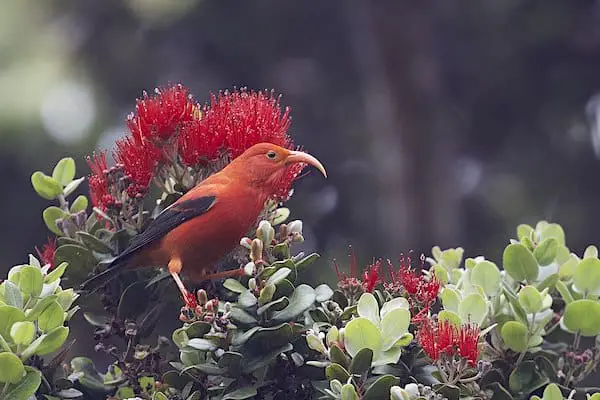
The ‘I’iwi is a visually striking bird with a distinctive appearance. It is medium-sized, measuring about 6 to 7 inches (15 to 18 centimeters) in length. The most remarkable feature of the ‘I’iwi is its vibrant plumage. The adults exhibit bright scarlet feathers on their body, wings, and tail, creating a striking contrast against the lush green Hawaiian forests they inhabit.
The ‘I’iwi has a slender, slightly curved bill, which is long and slender for accessing nectar from flowers. The bill is typically black, contrasting with the bird’s vivid red coloration. The wings are rounded, and the tail is relatively short in proportion to its body size.
Young ‘I’iwi birds have a slightly different appearance. First-cycle individuals or juveniles are variegated with red, brown, and yellow feathers. Their plumage is duller compared to adults but still displays a mix of colors.
Diet
The ‘I’iwi has a specialized diet that primarily consists of nectar, making it a nectarivorous bird. With its unique bill adaptation, the ‘I’iwi is well-equipped for feeding on the nectar of various flowering plants. Its slender, curved bill, measuring around 1 to 1.5 inches (2.5 to 3.8 centimeters) in length, allows it to reach deep into the tubular flowers to extract the sweet liquid.
While nectar forms a significant portion of their diet, ‘I’iwi also supplement their nutritional needs by consuming fruits and insects. They feed on a variety of native Hawaiian fruits, including those from the ‘ōhi’a lehua tree and other plant species. Insects, such as spiders and caterpillars, are occasionally included in their diet, providing additional protein and nutrients.
Nesting
The ‘I’iwi engages in nesting behavior to reproduce and raise its young. Nesting typically occurs in the native forests of the Hawaiian Islands.
The ‘I’iwi constructs its nest in the canopy of trees, usually within the branches of ‘ōhi’a lehua (Metrosideros polymorpha) trees or other native tree species. The nest is cup-shaped and made primarily of plant materials such as twigs, leaves, and moss. The ‘I’iwi uses plant fibers and spider silk to bind the nest together, providing it with structural strength.
The female ‘I’iwi is responsible for incubating the eggs, typically laying one to two eggs per clutch. The incubation period lasts for about 14 to 15 days.
During this time, the female remains dedicated to keeping the eggs warm and protected. The male may assist in providing food for the female during this period.
Once the eggs hatch, both parents contribute to feeding and caring for the nestlings. They feed the young chicks a diet consisting of regurgitated nectar and insects, ensuring they receive the necessary nutrients for growth and development.
The nestlings stay in the nest for several weeks, gradually maturing and gaining strength. After around 20 to 25 days, they fledge and take their first flights. The parents continue to provide food and care for the fledglings for some time until they become independent.
Behavior
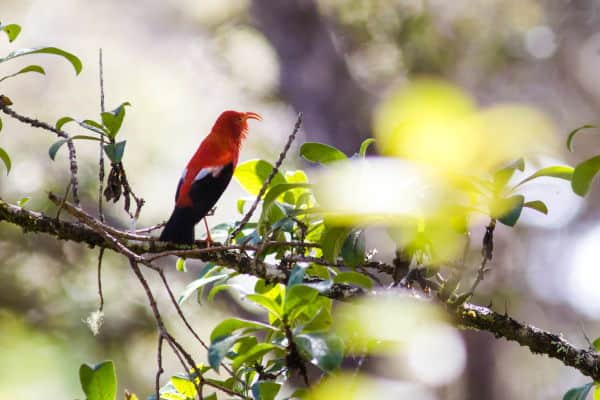
The ‘I’iwi exhibits fascinating behavior that is characteristic of this Hawaiian bird species. ‘I’iwi are nectarivorous birds, and a significant part of their behavior revolves around feeding on nectar from various flowering plants. They have specialized bills adapted for extracting nectar from tubular flowers.
In addition to nectar, they also consume fruits and occasionally insects to supplement their diet. ‘I’iwi are known for their melodic songs, consisting of a series of sweet, flute-like notes, which they use for courtship displays and territorial defense. Their songs can be heard echoing through the forests they inhabit.
‘I’iwi are agile fliers, using a series of rapid wingbeats followed by gliding to navigate through the dense forest canopy. During the breeding season, male ‘I’iwi engage in elaborate courtship displays involving aerial acrobatics, wing flapping, and showcasing their vibrant plumage to attract females. They are typically seen in pairs or small family groups, although they can also form larger flocks outside of the breeding season.
‘I’iwi exhibit altitudinal migration, moving between higher elevations during summer months and descending to lower elevations during winter months, following the blooming patterns of flowers. They establish territories in native Hawaiian forests for feeding and breeding and vigorously defend them against intruding individuals.
‘I’iwi play a vital ecological role as pollinators, transferring pollen between flowers while feeding on nectar. They have shown some adaptability to human-altered environments by visiting non-native flowering plants, but their long-term survival depends on the conservation and restoration of their native forest habitats.
Habitat
The ‘I’iwi is particularly adapted to the native forest environment, where it finds an abundance of nectar-rich flowers for feeding. Native flowering plants, such as ‘ōhi’a lehua and other endemic species, play a crucial role in providing a food source for the ‘I’iwi. The structural complexity of the forest canopy offers protection, nesting sites, and perches for the birds.
The ‘I’iwi’s habitat extends across various elevations, as it moves between different zones based on flower phenology and resource availability. During the summer months, ‘I’iwi can be found at higher elevations where the blooming of native flowers is more abundant. In the winter, they descend to lower elevations in search of flowering plants and food sources.
Unfortunately, the ‘I’iwi’s habitat has faced significant threats, including habitat loss and degradation caused by deforestation, urbanization, agriculture, and the introduction of invasive species. These factors have resulted in the fragmentation of their native forest habitats, making conservation efforts crucial for the survival of the species.
Range
The ‘I’iwi, a striking Hawaiian landbird, has a range that historically encompassed several islands in Hawaii. It was once found on all six Southeastern Hawaiian Islands with forested mountains. However, over time, its distribution and abundance have significantly declined.
Currently, the ‘I’iwi can still be observed on certain islands in Hawaii. It is known to inhabit Kaua’i, O’ahu, Maui, and Hawai’i (the Big Island). However, it should be noted that its presence and population size vary across these islands.
On Kaua’i, ‘I’iwi populations have decreased, and the species is now considered rare. On O’ahu, it is scarce and has been observed in limited numbers in specific areas. Maui and Hawai’i still support relatively common populations of ‘I’iwi, particularly in higher elevation forests.
Conservation Status
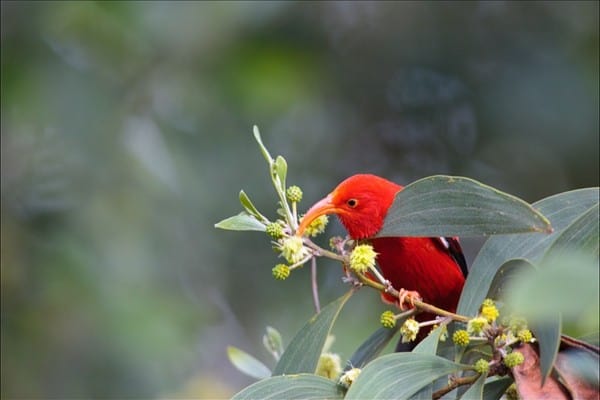
The conservation status of the ‘I’iwi, a native Hawaiian landbird, is a matter of concern. The species is currently listed as vulnerable by the International Union for Conservation of Nature (IUCN). It faces multiple threats that have contributed to population declines and range contractions.
One of the primary threats to the ‘I’iwi is avian diseases, particularly avian malaria and avian pox, which are transmitted by introduced mosquitoes. These diseases have had devastating impacts on native Hawaiian bird populations, including the ‘I’iwi. The species has shown low resistance and high susceptibility to these diseases, especially at lower elevations where mosquitoes are more prevalent.
Interesting Facts
1. Striking appearance
The ‘I’iwi is known for its vibrant and eye-catching plumage. It features bright scarlet feathers, a long, curved carmine bill, and black wings and tail.
2. Vulnerability to avian diseases
The ‘I’iwi is highly susceptible to avian diseases like avian malaria and avian pox, which are transmitted by introduced mosquitoes. This susceptibility has been a major factor in population declines.
3. Range altitude variation
‘I’iwi populations show altitude variation in their range. They can be found at higher elevations, particularly in mountainous forests, but may also migrate downslope following flower phenology.
4. Vocal abilities
The ‘I’iwi has a varied repertoire of vocalizations, including melodic songs and calls. These vocalizations are used for communication within the species, such as defending territory and attracting mates.
Frequently Asked Questions
1. Why is the ‘I’iwi’s bill curved?
The ‘I’iwi’s curved bill is specialized for feeding on nectar from flowers. Its shape allows it to access deep within tubular flowers to extract nectar.
2. Can the ‘I’iwi be kept as a pet?
No, keeping the ‘I’iwi as a pet is illegal and highly discouraged. The species is protected by law, and capturing or keeping them in captivity without proper permits is prohibited. Conservation efforts focus on preserving the ‘I’iwi in its natural habitat.
3. How do ‘I’iwi communicate with each other?
‘I’iwi communicate using a variety of vocalizations. Their melodic songs are typically heard during courtship displays and territorial defense. They also produce calls and chirps for communication between individuals or groups.
4. How long do ‘I’iwi birds typically live?
The ‘I’iwi birds have a relatively long lifespan for their size. While individual lifespans can vary, studies have indicated that ‘I’iwi can live for up to 10 years in the wild.
